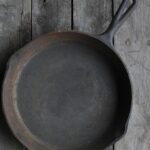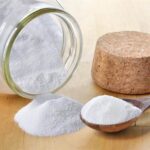There are various types of spoons made from different materials available in the market, with stainless steel being the most popular choice due to its high luster and durability. However, over time and with constant use, many of these stainless steel spoons tend to turn black due to the impact of the environment and the food we eat. So, is it safe to continue using these discolored spoons? Let’s find out.
Should You Continue Using Discolored Stainless Steel Spoons or Toss Them Out?
Not all stainless steel is created equal. There are different grades of stainless steel, such as 201, 304, 430, and each grade has its unique properties and limitations.
Grade 430 stainless steel, for example, contains 15% chromium, iron, and other elements, but no nickel. It is known for its shiny appearance and magnetic properties, making it suitable for induction cooktops and safe for health. However, Grade 430 stainless steel is relatively thin, prone to oxidation, and may develop stains over prolonged use.
Grade 201 stainless steel, on the other hand, contains 18% chromium, 3% nickel, iron, and other elements. It is commonly used for kitchen utensils like pots, pans, and vacuum flasks. This grade offers a good balance of durability, lightweight, and safety at a relatively lower cost.
Grade 410 stainless steel is mainly used for manufacturing spoons, chopsticks, and other similar items. With approximately 11.5% chromium, it exhibits magnetic properties, is affordable, lightweight, and safe for health. However, Grade 410 is susceptible to scratches and staining over time.
Grade 304 stainless steel is considered the best grade for producing household appliances. It contains 10% chromium and 10% nickel, along with iron and other elements. This grade is known for its high luster, durability, and excellent oxidation resistance. However, appliances made from Grade 304 stainless steel tend to be more expensive, heavier, and non-magnetic, making them incompatible with induction cooktops. To make them induction-compatible, a layer of Grade 430 stainless steel is often applied to the base.

Should you continue using discolored stainless steel spoons? (Photo: Istock)
The discoloration of stainless steel spoons can be attributed to chemical reactions with acidic foods, direct contact with chemicals, or oxidation. To determine if it’s safe to continue using a discolored spoon, try cleaning it with lemon juice or vinegar, followed by a thorough rinse with warm water. Alternatively, you can make a paste with baking soda and water and scrub the surface of the spoon.
If the spoon returns to its original color and shows no signs of corrosion or damage, it is safe to continue using it. However, if the spoon remains discolored and shows signs of deterioration, it is best to discard it for health and safety reasons.
While a blackened stainless steel spoon may not always pose a health hazard, it is recommended to thoroughly clean all your stainless steel spoons periodically, dispose of old ones, and opt for higher-quality stainless steel grades to ensure the best and safest experience.
Tips for Maintaining Stainless Steel Utensils
To prolong the life of your stainless steel utensils and maintain their quality, keep the following tips in mind:
Avoid using chlorine-based cleaning agents as they can cause corrosion and reduce the lifespan of your stainless steel utensils.
Do not use stainless steel containers to store highly acidic foods like vinegar or citrus juices for extended periods, as this can lead to corrosion and deterioration of the material.
When cleaning stainless steel utensils, avoid using abrasive scrubbers or steel wool as they can scratch the surface.
According to VTC News
The Magic of Mixing Laundry Detergent and Salt: Unveiling Surprising Benefits to Save You a Fortune
By combining laundry detergent and salt, you’ve stumbled upon a dynamic duo that tackles a myriad of household challenges. This unlikely pairing packs a powerful punch, offering solutions that extend beyond the laundry room. Get ready to unlock a whole new world of practical possibilities with this unique blend!



































